Author(s): <p>David Sierra, William Montanaro, Lee Kuo and Bahman Zohuri*</p>
Fire outbreaks pose significant risks to life, property, and the environment. Swift and accurate fire detection is crucial to minimize the potential damage. In recent years, advancements in computer vision techniques, particularly Convolutional Neural Networks (CNNs) and Transfer Learning, have revolutionized the field of fire detection. This article delves and introduce the comprehensive research study has taken place by the first three authors under guideline of their instructor into the integration of CNN and Transfer Learning in fire detection, highlighting their effectiveness and potential impact on enhancing fire safety measures. Fire detection plays a critical role in safeguarding lives and property. Traditional fire detection systems often rely on manual intervention and have limitations in terms of accuracy, response time, and adaptability. The advent of machine learning (ML) techniques has revolutionized fire detection by enabling the development of intelligent systems that can identify and respond to fires in real-time. This paper presents a comprehensive review of the advancements in ML-driven fire detection techniques, discusses their benefits and challenges, and outlines potential future directions for research and development.and outlines potential future directions for research and development.s of splicing
for both air and water mood. The updated 92Z2 showed good result for both method.
The massive devastation of both human life and property that can result from fires makes them a catastrophic and potentially fatal event. Early fire detection and quick action are essential for reducing the damage they cause. Manual observation or rule-based systems have been the mainstays of traditional fire detection techniques, which may have shortcomings in accuracy, responsiveness, and adaptability. A paradigm change has occurred recently with the incorporation of machine learning (ML) techniques into fire detection systems, which has the potential to revolutionize the industry and greatly improve our capacity for spotting and putting out fires.
As a subset of artificial intelligence, machine learning enables computers to learn from data and continuously improve their performance without explicit programming. Fire detection has the potential to change from a reactive process to a proactive and intelligent one by utilizing the power of cutting-edge algorithms and data-driven insights. This article offers a thorough analysis of the cutting-edge uses of ML in fire detection, highlighting significant methods, advantages, and difficulties while also outlining prospective directions for further study.
In this article, we explore the many ML-driven strategies that have been developed to solve the drawbacks of conventional fire detection techniques. We investigate the use of image-based methods that make use of Convolutional Neural Networks (CNNs) to examine smoke and flame patterns as visual signals. We also explore sensor-based approaches to track environmental factors related to fires, such as temperature, humidity, and gas concentrations. These approaches use data from Internet of Things (IoT) devices and sensor networks. We also investigate how applying Recurrent Neural Networks (RNNs) for sequential data analysis and merging numerous data sources through multimodal techniques might improve the precision and dependability of fire detection systems.
Additionally, we go over the many advantages that ML-driven fire detection systems provide, such as improved accuracy, real- time monitoring, and adaptation to various contexts. In addition, we emphasize the difficulties that need to be overcome, such as the lack of labeled data for training, assuring the robustness of ML models in dynamic environments, and reducing energy consumption for practical implementation.
We will critically evaluate the possibilities and restrictions of current machine learning (ML) approaches as we go along, highlighting the demand for standardized datasets, explainable AI, energy-efficient implementations, and the quest of early fire prediction skills. We can steer the future of fire detection in a direction that takes advantage of machine learning's exceptional potential to save lives, protect property, and completely change how we fight fires by learning from these debates. Researchers, business leaders, and legislators may work together to fully realize the potential of ML-driven fire detection systems and usher in a new era of fire safety and management.
In this paper we introduce few basic aspect and factors involved with Artificial Intelligence (AI) in conjunction with its sub- components that are known as Machine Learning and Deep Learning (DL) as depicted in Figure-1 here.
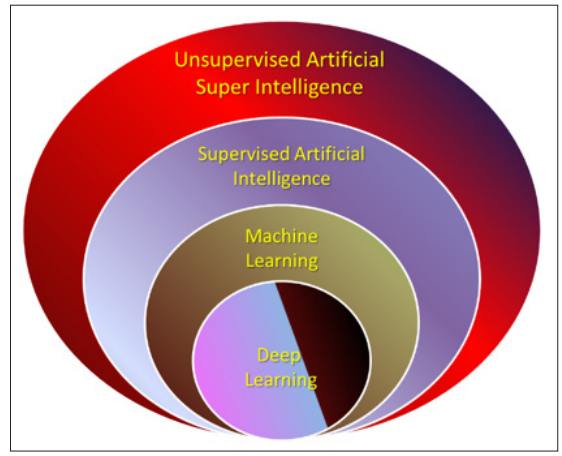
Figure1: Schematic of Artificial Intelligence Levels
As we have learned from innovative modern technology thriving rapidly, Artificial Intelligence (AI) refers to the simulation of human intelligence processes by machines, particularly computer systems. It involves the development of algorithms and models that enable machines to perform tasks that typically require human-like cognitive functions, such as reasoning, problem-solving, learning, and decision-making.
Machine Learning (ML) is a subset of AI that focuses on the development of algorithms that allow computers to learn from and make predictions or decisions based on data. ML algorithms improve their performance over time as they are exposed to more data, enabling them to identify patterns, make predictions, and solve complex problems without being explicitly programmed.
Deep Learning (DL) is a specialized branch of machine learning inspired by the structure and function of the human brain's neural networks. It involves the use of artificial neural networks composed of interconnected nodes (neurons) that process and transform data in multiple layers. Deep learning has demonstrated remarkable success in tasks like image and speech recognition, natural language processing, and game playing, achieving state- of-the-art results in various AI applications.
In summary, AI encompasses the broader concept of machines exhibiting human-like intelligence, while machine learning is a subset that focuses on algorithms that can learn from data. Deep learning is a further specialization within machine learning that employs neural networks with multiple layers to enable more complex and intricate pattern recognition and learning.
Deep Learning (DL) is a subset of machine learning that employs Artificial Neural Networks (ANNs) with multiple layers to process and learn from data. Here's a short description of how DL relates to specific types of neural networks.
An MLP is a basic type of Neural Network (NN) architecture, consisting of an input layer, one or more hidden layers, and an output layer. Each layer contains interconnected nodes (i.e., neurons) that process data and pass it to the next layer. MLPs are suitable for various tasks, such as classification and regression, where the input data's features can be transformed into a meaningful representation through multiple layers of computation.
RNNs are designed to handle sequences of data, such as time series or sequences of text. They have an internal memory that allows them to maintain information across different time steps, making them suitable for tasks involving sequential data. RNNs suffer from some limitations, such as the vanishing gradient problem, which can impact their ability to capture long-range dependencies.
CNNs are specialized for processing grid-like data, such as images and spatial data. They consist of convolutional layers that apply filters to different regions of the input, enabling them to detect features at different levels of abstraction. CNNs have been highly successful in tasks like image recognition, object detection, and image generation due to their ability to automatically learn hierarchical representations of visual data.
In the context of deep learning, these neural network architectures represent different ways to structure and process data, with each type suited to specific types of input and tasks. Deep learning leverages the depth and complexity of these architectures to automatically learn intricate patterns and representations from data, enabling it to excel in tasks that were traditionally challenging for conventional machine learning techniques.
The Power of Convolutional Neural Networks (CNNs) CNNs, inspired by the human visual system, have proven to be highly adept a image classification and object detection tasks. The architecture's ability to automatically learn intricate features from images makes it particularly well-suited for fire detection. CNNs work by employing layers of convolutional and pooling operations, which enable the network to identify patterns and relationships within images.
When it comes to fire detection, CNNs can learn to recognize unique characteristics of fire, such as color, texture, and shape. The architecture's capacity to analyze large volumes of data quickly and accurately makes it a powerful tool in identifying fires in real-time scenarios, enabling timely response and mitigation.
Using a pre-trained model that has often been built on a big dataset and fine-tuning it for a particular job with a smaller dataset is known as transfer learning. When working with sparse data, this strategy is especially helpful since it applies knowledge from a wider context to the specific issue at hand.
Transfer Learning has the ability to dramatically increase the precision and effectiveness of fire detection algorithms. The model may quickly learn to recognize fire-related patterns by starting with a pre-trained CNN model, like Visual Geometry Group (VGG), ResNet, or Inception, then fine-tuning it on a dataset comprising photos of fire. Transfer Learning lessens the requirement for large amounts of training data and aids in reducing the problems brought on by overfitting. CNN and Transfer Learning in Fire
Detection: Experimental Studies See Figure-1, where we have used Python algorithm for our model development involves the selection, design, and training of algorithm that can recognize and respond to fire patterns.
Note that: Visual Geometry Group (VGG) is a standard deep Convolutional Neural Network (CNN) architecture with multiple layers. The “Deep” refers to the number of layers with VGG-16 or VGG-19 consisting of 16 and 19 convolutional layers.
Numerous experiments have been done to evaluate the efficacy of CNN and Transfer Learning in fire detection. In these investigations, multiple datasets of fire-related photos are gathered, and various CNN architectures and transfer learning approaches are benchmarked.
Pre-trained CNNs that have been improved via Transfer Learning regularly beat conventional computer vision techniques in fire detection tasks, according to research. Even in difficult conditions with poor sight, the models demonstrate outstanding accuracy rates in recognizing flames, smoke, and other fire-related factors.
Researchers have also looked into the possibility of improving fire detection accuracy by merging multi-modal data, such as visual and thermal pictures. This comprehensive strategy results in more robust and reliable fire detection systems by utilizing the complementing information offered by several forms of data.
Machine learning techniques have demonstrated remarkable capabilities in enhancing the accuracy, speed, and adaptability of fire detection systems. In this section, we delve into the various ML-driven approaches that have been developed to revolutionize fire detection.
Flames and smoke are important visual clues for recognizing fires. Convolutional neural networks (CNNs), a kind of deep learning models specifically created for image processing, are powerful tools for picture-based fire detection. It is possible for CNNs to discern between typical environmental conditions and potential fire events since they are adept at capturing subtle patterns and features inside images.
The technique of transfer learning is commonly used in image- based fire detection. Fire-related patterns can be recognized with the use of pre-trained CNN models, which are frequently trained on large datasets like ImageNet. These models can generalize their understanding of flames and adapt to varied circumstances by using information learned from a wider range of objects and scenes. Furthermore, model robustness can be improved and overfitting prevented by using data augmentation techniques like rotation, scaling, and flipping.
Sensor-based fire detection tracks the environmental factors related to flames using data from IoT devices and sensor networks. Changes in temperature, humidity, gas concentrations (such carbon monoxide), and other pertinent factors are among these circumstances. The data streams from these sensors are analyzed using machine learning techniques to look for unusual trends that could point to the presence of a fire.
Complex correlations between sensor data and fire occurrences can be learned using Machine Learning (ML) models like decision trees and Support Vector Machines (SVMs). Additionally, by taking into account numerous sensors at once, more sophisticated approaches like random forests and gradient boosting can increase detection accuracy. Sensor fusion, which combines data from various sensor types, can improve the accuracy of fire detection and result in a more thorough awareness of the environment.
As part of sensor technology of fire detection, the team of the first three authors here suggesting their own designed hardware and its related components as part of their research study and the entire logical and physical layout of their sensor depicted in Figure-3 and Figure-4.
The detailed off the self-components suggested by us listed below:
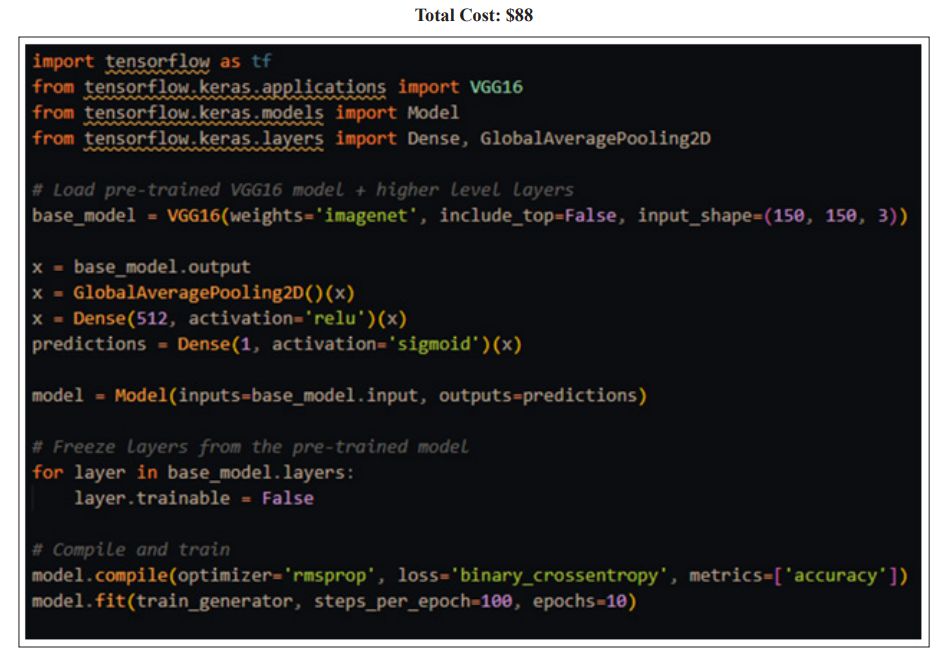
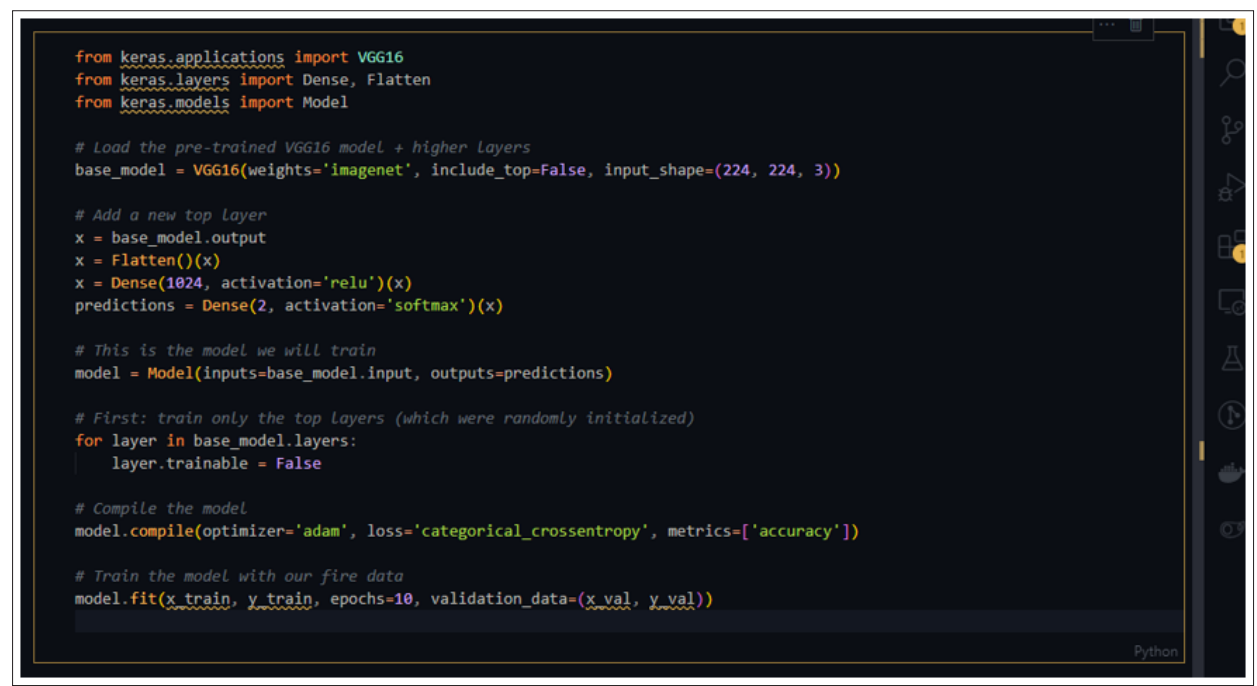
Figure 2: Transfer Learning and VGG16
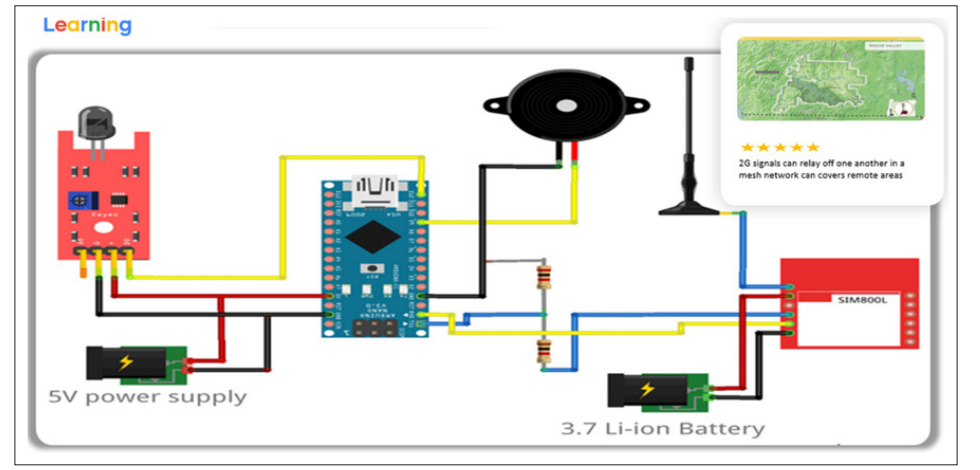
Figure 3: Suggested Detector Logical Layout by Authors
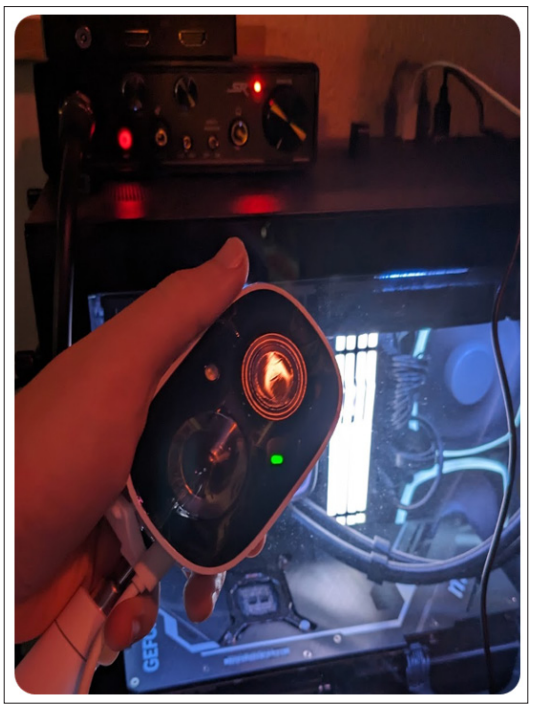
Figure 4: Suggested Detector Physical Layout by Authors during Testing
Continual learning, also known as lifelong learning, refers to the ability of a model to learn and adapt from a stream of data continually. In our context, it is about the model's ability to ingest and learn from the continuous stream of camera images.
Integrating cameras to update the image repository continually is a groundbreaking aspect of our project. These cameras, strategically placed in rural areas, provide real-time images that feed into our system.
This approach ensures the model receives a constant flow of new data, reflecting the ever-changing nature of rural landscapes and fire behavior. It enables the system to evolve with the environment, recognizing new patterns and adapting to different conditions.
The continuous learning process ensures that the model evolves with new data, maintaining its relevancy and accuracy over time. It can update its understanding as the model encounters new types of fires, fuels, and environmental conditions.
This adaptability is essential for a system deployed in dynamic and diverse rural settings. It ensures that the fire detection model remains practical and relevant, providing accurate and timely alerts.
In conclusion, continual learning represents a significant advancement in machine learning, allowing models to grow and adapt over time. By integrating real-time cameras and continuous adaptation, our project showcases the potential of this approach, creating a fire detection system that is not just static and reactive but dynamic and proactive.
There are broad ramifications for numerous businesses and sectors from the integration of CNN and Transfer Learning in fire detection. These methods can be used in industrial settings, woodlands, and even rural places with little human surveillance in addition to protecting residential and commercial sectors.
By incorporating CNN and Transfer Learning-based fire detection systems into their daily operations, fire departments, emergency response teams, and disaster management organizations can profit from these developments. Real-time fire detection has the ability to prevent fatalities, considerably cut down on property damage, and drastically shorten response times.
The implications and applications of our fire detection system extend beyond technology. It represents a convergence of science, society, and policy with far-reaching impacts.
The primary application of this project is in rural fire detection. It promises significant benefits regarding prompt response, resource optimization, ecological protection, and community empowerment
The system's potential to minimize damage, streamline response efforts, and provide continuous insights carries broad economic, ecological, and social implications. It showcases how technology can be harnessed for the greater good, creating solutions that resonate with human values and environmental stewardship – ideally, as many components as possible will have been upcycled [1-6].
The combination of Convolutional Neural Networks (CNNs) and Transfer Learning holds immense promise in revolutionizing fire detection capabilities. As demonstrated by experimental studies, these techniques can significantly enhance the accuracy, efficiency, and speed of fire detection systems. By leveraging CNNs' image recognition capabilities and the knowledge captured through Transfer Learning, we are moving closer to a future where fire outbreaks can be identified and addressed swiftly, ultimately contributing to a safer and more secure world.
Our project represents a significant step in leveraging machine learning for critical real-world applications. By integrating real- time data, advanced algorithms, continuous learning, and ethical considerations, we envision a future where intelligent, adaptive technologies safeguard rural landscapes.
Transfer learning, particularly the VGG16 model, is a testament to the power of shared knowledge and innovation. It demonstrates how existing models and data can be repurposed for new challenges, breaking down barriers and accelerating progress. Our collaboration with academic and industry partners, engagement with communities, and commitment to sustainability underscore the holistic nature of our approach. Technology can create compelling, just, and sustainable solutions aligned with human values and ecological principles.
